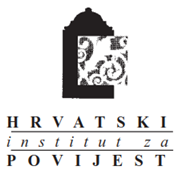FILMING OF THE ORIENT: THE DEUTSCH-MACELJSKI FAMILY AND THEIR CRUISE OVER EASTERN MEDITERRANEAN IN 1930'S
DOI:
https://doi.org/10.22586/review.v17i1.19689Keywords:
Zagreb elite, Deutsch-Maceljski, steamship “Queen Mary”, Egypt, Orient, family moviesAbstract
The largest and most luxurious passenger ship in the Adriatic was the steamship “Queen Mary”, that initially held constant 12-days line from Sušak, via Split and Dubrovnik to Greece. Later, that line was extended to Palestine and Egypt, and has attracted the attention of members of the Zagreb elite. Among the first ones who have travelled that line, from September 13th until October 7th, 1933, was the prominent Zagreb’s entrepreneurial family Deutsch-Maceljski. Their experience and atmosphere from the cruise and places they visited were recorded by the film camera. They recorded footage and descriptions of Istanbul, the Bosphorus, Rhodes, Beirut, Lebanon and Damascus, and the most fascinating images and descriptions were the family visits to Jaffa, Jerusalem, the Dead Sea, Bethlehem, Tel Aviv and Cairo. In this article, we will analyze this rare film that has been preserved in the Cinematheque of the Croatian State Archives in Zagreb.
Downloads
Published
How to Cite
Issue
Section
License
Copyright (c) 2021 Copyright holders are the publisher Croatian Institute of History and the authors.

This work is licensed under a Creative Commons Attribution-NonCommercial 4.0 International License.
The copyright holders are the Croatian Institute of History (as the publisher) and the authors.
The Review of Croatian History is an open-access journal. Its contents are freely accessible in their entirety. Users may read, download, copy, distribute, print, search, or put links to its material, and to change, reword, and process the material or use it in other legal ways, as long as they cite the original in the appropriate manner, in accordance with the Creative Commons licence CC BY-NC.
Works published in the Review of Croatian History may be deposited in institutional or thematic repositories, as long as the appropriate links to the web pages of the Journal and Hrčak (central portal of Croatian scientific journals) are made available.
The self-archiving policy is indexed in the Sherpa/RoMEO database, where it is visible that the journal allows the depositing of unreviewed (pre-print), reviewed (post-print), or publisher’s versions of the work.


